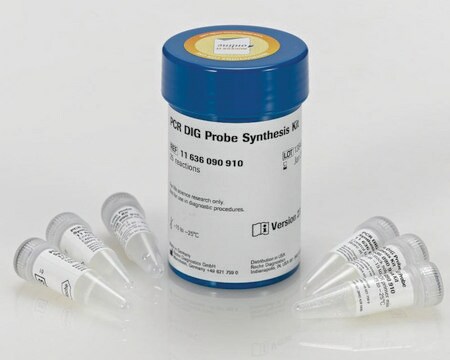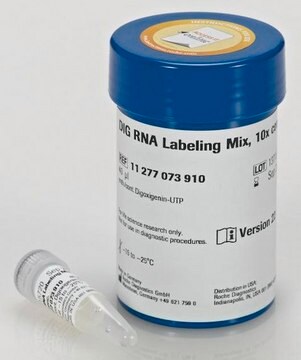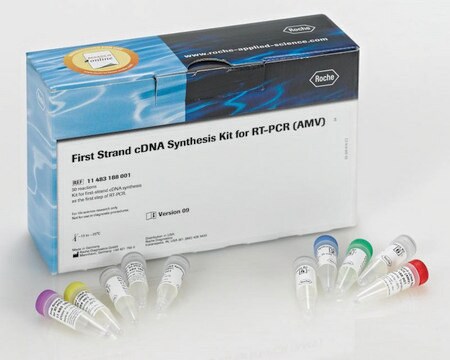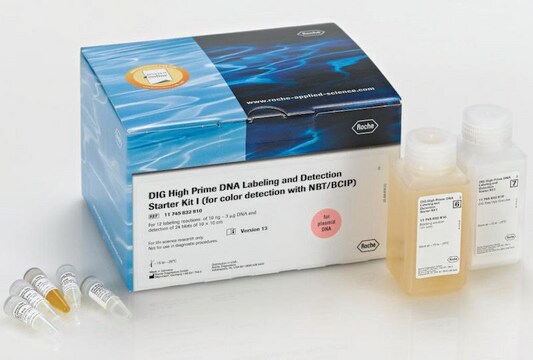11585550910
Roche
PCR DIG Labeling Mix
solution, suitable for PCR
Sinonimo/i:
nucleic acid labeling
About This Item
Prodotti consigliati
Forma fisica
solution
Livello qualitativo
impiego
sufficient for 2 x 25 assays (100 ul final reaction volume)
Confezionamento
pkg of 500 μL (2 x 250 μl)
Produttore/marchio commerciale
Roche
Caratteristiche più verdi
Designing Safer Chemicals
Learn more about the Principles of Green Chemistry.
sustainability
Greener Alternative Product
tecniche
PCR: suitable
Colore
colorless
Solubilità
water: miscible
Categoria alternativa più verde
, Aligned
Temperatura di conservazione
−20°C
Descrizione generale
When using higher concentrations of DIG-deoxyuridinetriphosphate (dUTP) what is supplied with the PCR DIG Labeling Mix, the yield of the PCR product may be reduced, but however, the label intensity and the molecular weight of the PCR product is increased.
Applicazioni
PCR DIG Labeling Mix has been used in the preparation of digoxigenin-labeled riboprobes during the in vitro transcription step.
Qualità
Stato fisico
Altre note
Comunemente ordinati con questo prodotto
Codice della classe di stoccaggio
12 - Non Combustible Liquids
Classe di pericolosità dell'acqua (WGK)
nwg
Punto d’infiammabilità (°F)
does not flash
Punto d’infiammabilità (°C)
does not flash
Certificati d'analisi (COA)
Cerca il Certificati d'analisi (COA) digitando il numero di lotto/batch corrispondente. I numeri di lotto o di batch sono stampati sull'etichetta dei prodotti dopo la parola ‘Lotto’ o ‘Batch’.
Possiedi già questo prodotto?
I documenti relativi ai prodotti acquistati recentemente sono disponibili nell’Archivio dei documenti.
I clienti hanno visto anche
Articoli
Digoxigenin (DIG) labeling methods and kits for DNA and RNA DIG probes, random primed DNA labeling, nick translation labeling, 5’ and 3’ oligonucleotide end-labeling.
Il team dei nostri ricercatori vanta grande esperienza in tutte le aree della ricerca quali Life Science, scienza dei materiali, sintesi chimica, cromatografia, discipline analitiche, ecc..
Contatta l'Assistenza Tecnica.





